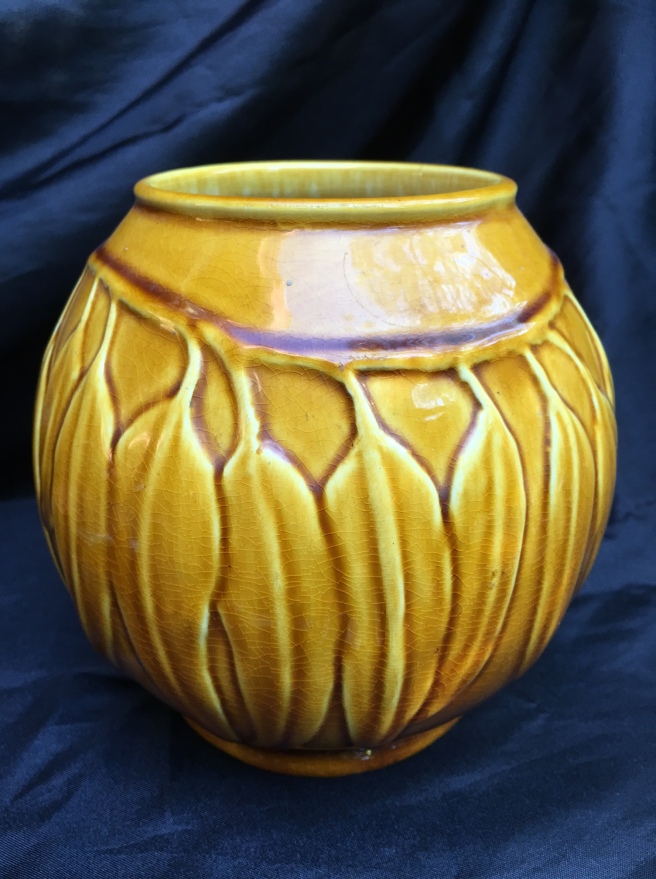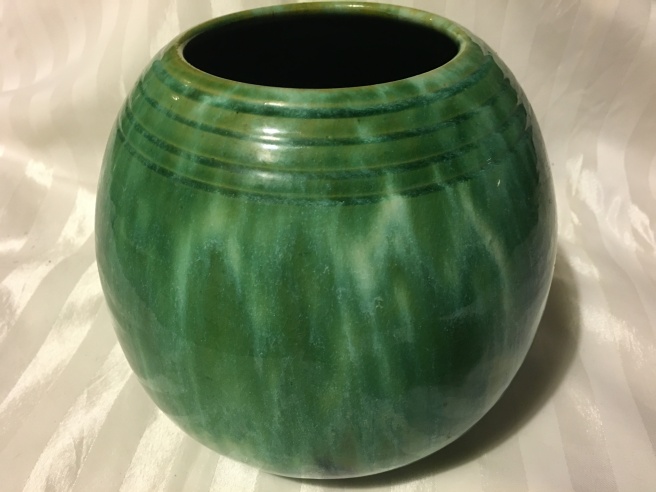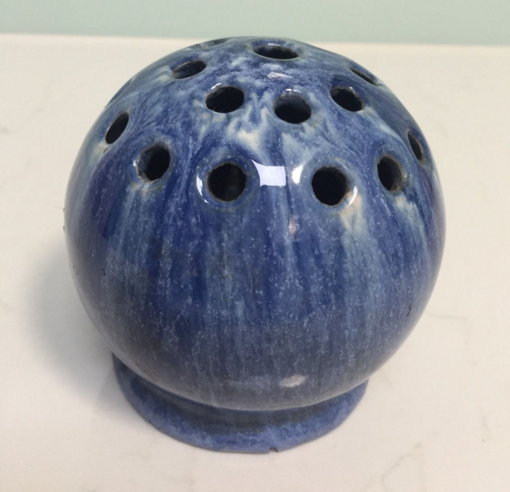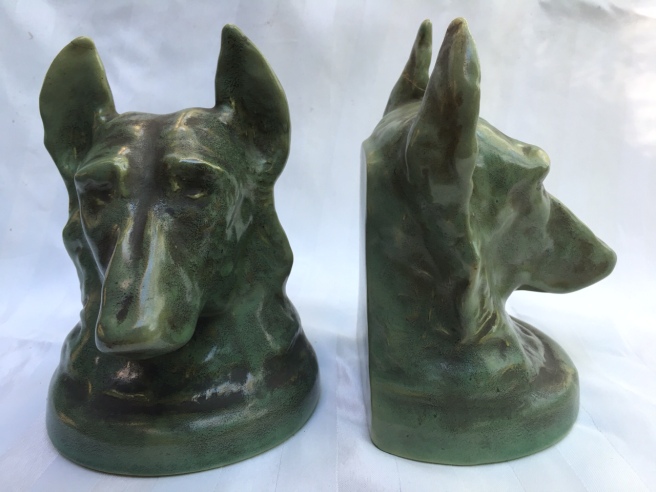Sharing is caring so they say and as far as identifying pottery, glass and other collectibles, sharing is the best and easiest way to find out the history of your mysterious items.
Sure, you can google til your eyes goggle, and endlessly flip through photo-sharing sites such as pinterest and if you’re lucky, you’ll find your way to what you are looking for. But beware, there’s a lot of misinformation out there and as the internet would have it, lots of this misinformation gets shared and shared and all of a sudden, through nothing other than the power of chinese whispers, you will have wrongly identified the pottery sculpture you bought at a local garage sale, as a previously unknown Picasso masterpiece, when in reality, it was a high school art project!
The best way to share your items for identification purposes, is to find groups of people who collect items similar to what you do, or what you are looking to ID. Facebook has become a great tool for this and of course, a great way to upload photos of your mystery items, in order to have others, who might know about it, help you to ID it. Just use the facebook ‘search’ box and put in a few words that might be applicable to the kind of groups you are looking for. Most of these groups are closed and you will have to request to join, but once you’re in, read through their guidelines and just make sure you abide by the rules of the group, have a read through some of the posts to make sure that this is the sort of group that you’re looking for, then post away. One of the lovely things that happens in these groups, is when you have a number of people in the group, who actually not only collect the same things, but who themselves have come across knowledge that they are more than just willing, but even excited to share with others. I find this happens all the time and sometimes, quite by accident, I find I am able to even identify not just the potters, or pottery companies, but even the ‘design or style numbers’ of items I own.
A classic example of this happened just the other day, when someone posted up a little vase, looking to identify the potter, through the shape and glaze. A few comments later someone posted a photo up of another much larger two-handled pot with similar glazes that was Melrose, the same style as a pot I own, so I posted a photo up of mine, then someone else posted a photo of one he had, along with the actual factory number of this lovely two-handled design. I’ve had my pot for quite a while, always knowing of course that it was Melrose, through it’s distinctive glazes and also the ‘Melrose Australian Ware’ factory stamp on the base, but never knowing the actual official number. A little mystery solved that I wasn’t even looking for. Mine is the blue and green one, which I now know is Melrose shape B.123.
This actually happened twice in the last week, also with these little vases too, which I now know is Melrose shape V.22. Once again, my little vase in these photos, is the blue and green one and the others were posted in a group I belong to, ‘Australian Potters’, with the owner of the green and pink one, looking to identify her vase.
Of course there is eBay too, a very easy way to search for items similar to yours, but once again, be careful of taking the word of eBay sellers, on the history, identification and provenance of any items, but there are sellers on eBay with extensive knowledge of the items they are selling and there are many vintage and antique dealers now also using eBay ‘virtual shops’ to sell their wares to a much larger audience than their real shops. You can also email the sellers through eBay if you’re looking for more information on an item.
Of course, if you can afford them, there are some extraordinary books around too, often expensive though, even up around the $150-$200 mark, but if your collecting is on a specific subject, then look to see if there are books about this subject. As far as Australian Pottery goes, there are many books, both old and new, that can help to give you more knowledge on your collections, or things you might like to be able to identify if you should come across them. The Geoff Ford books are very popular with collectors of Australian Pottery.
There are also internet sites for collectors, such as ‘Carter’s Price Guide to Antiques’, who have been the authority for nearly three decades, on not only identifying objects, but also of course to assist to value and price items too. In 2010 Carter’s published their last printed guide and went fully digital, now having 10 times the content of any of their books, in excess of 90,000 items! There is a subscription fee for this, but for anyone who collects art antiquities, antiques, collectables, retro, vintage and 20th century design, there is no better guide than Carter’s. The subscription fee ranges from $25 for one week, $45 for a month, up to $145 for a year’s access to their entire archive of previously sold items. Their newest entries are as early as one month ago, to several years ago, so the prices, although a good guide, for rarer items, could be prices from years ago. Even if you don’t subscribe to Carter’s, all of the images from their site, are visible on their site, as well as in google images, you just can’t see the price or the selling information, but you can usually get a good description of the items.

Recently, when I was looking for examples of Cottesloe Pottery, a company who made a vase that has been handed down to me through my Grandmother, from my Great Great Grandmother, Carter’s website was really helpful in showing me that there were very different designs also came out of this pottery company. My Grandmother’s vase is of the same series as the floral one in this photo, but the other vase is strikingly different and something that I will now be looking out for.
Another way I have found of helping to identify and price, not only items I own, but also items I am looking to buy, is to look at the sites of the auction houses, as they often have not only photos, but also information on items either from previous auction sales, or upcoming ones. Many not only have catalogues of even past auctions, but also ‘search’ boxes on their websites, that can help you locate any items they may have had listed too. In Australia, for Australiana pottery and good examples of all manner of Australian pottery, auction houses like Shapiros have been helpful for me and they are also one that Carter’s seem to follow too, so many of the Shaprios sold items can be found in the Carter’s guide too. Shaprios website has a massive collection of these back catalogues, which make for great trolling through.

When I was recently looking to try and identify a little pottery dish I bought, that simply has ‘Roslyn’ inscribed on the base, an internet search led me to Shapiros website, and into the catalogue for the ‘Richard Mackay Collection of Australian Pottery’, giving my lovely little gumnut dish an interesting provenance, in that Prof Richard Mackay had thought it was special enough to have had this very piece in his own collection! I still don’t know who ‘Roslyn’ was, but it was very interesting to find out who else had previously owned this gorgeous little Australiana pottery dish.
If you’re an accidental collector like myself, I hope this little beginner’s guide is of help to you. Please feel free to leave me a comment, or send me an email, especially if you might know who ‘Roslyn’ was, or if you know of any other examples of Cottesloe pottery, as I’d love to add more to that little collection.
Nicqui – The Accidental Collector
















































































